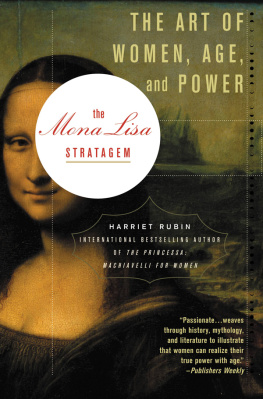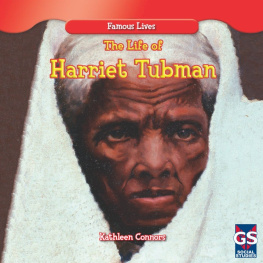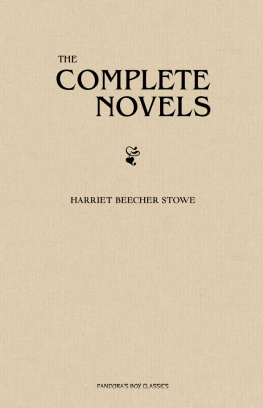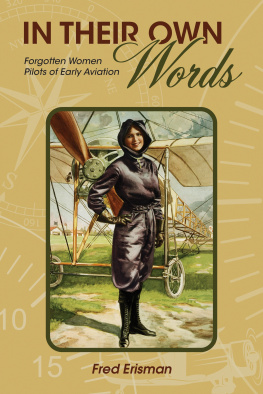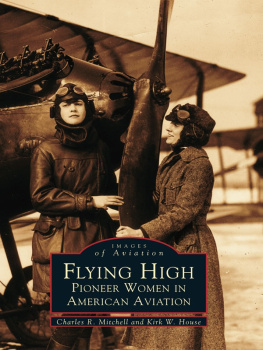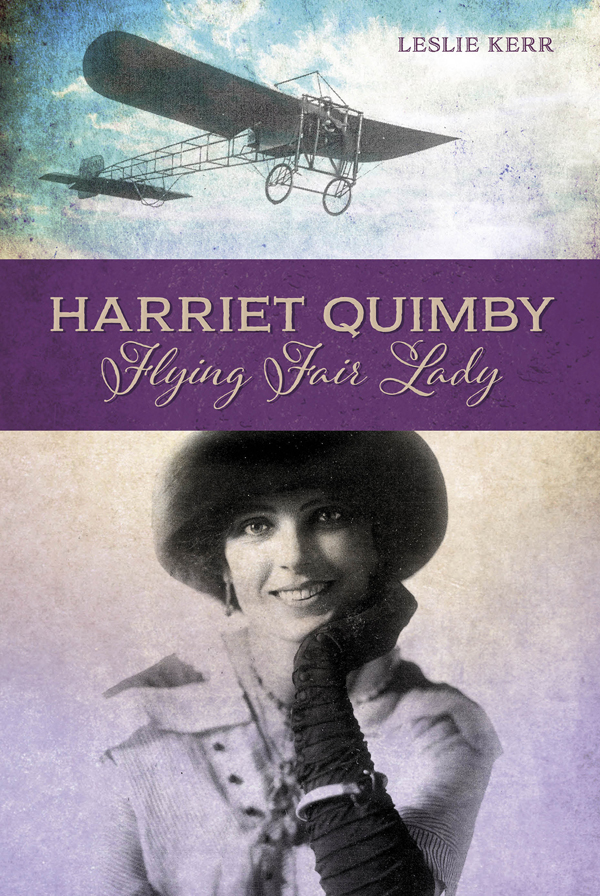Contents
Guide
Pagebreaks of the print version

Copyright 2016 by Leslie Kerr
All rights reserved. No part of this publication may be reproduced, distributed, or transmitted in any form or by any means, including photocopying, recording, or other electronic or mechanical methods, without the prior written permission of the publisher, except in the case of brief quotations embodied in critical reviews and certain other noncommercial uses permitted by copyright law.
Schiffer, Schiffer Publishing, Ltd., and the Design of pen and inkwell are registered trademarks of Schiffer Publishing, Ltd.
Published by Schiffer Publishing, Ltd.
4880 Lower Valley Road
Atglen, PA 19310
Phone: (610) 593-1777; Fax: (610) 593-2002
Email: info@schifferbooks.com
ISBN 978-1-5073-0020-6 (EPUB)
D EDICATION
To Grant, who has made life a joy, and to Drew, my inspiration.
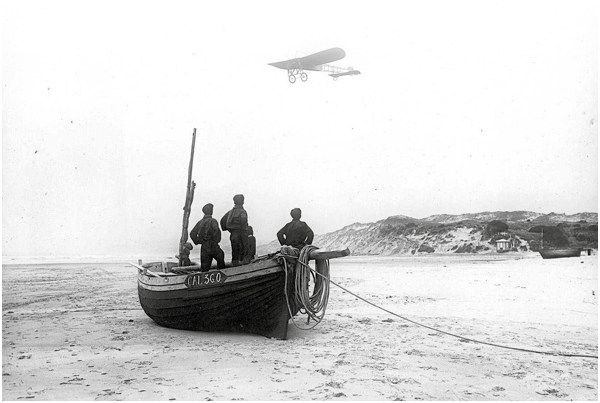

C ONTENTS
A CKNOWLEDGMENTS
It was the stunning, plum-hued flying outfit the mannequin wore that first caught my eye. My husband and I were touring the Cradle of Aviation Museum in Garden City, New York, with our friends, Alan and Sam Cagan. Amelia Earhart came to mind, but Alan, a pilot and a docent at the museum, informed me that, in fact, the lady before us was Miss Harriet Quimby. After learning something of her remarkable life that day, the journalist in me was curious to know more. Alan has continued to be a vital resource throughout the development of her story.
Melissa Keiser of the Smithsonian Institution Air & Space Museum Research Library was most generous with her time, as were the staff members at the Museum of Modern Art (MoMA) in New York City; the Arroyo Grande Library in San Luis Obispo County, California; the Academy of Motion Picture Arts and Sciences in Los Angeles; and the Library of Congress Digital Collections in Washington, DC.
My daughter-in-law, Diana Palcic, was instrumental in helping me with technical challenges a project like this entails. My editors at Schiffer Publishing, Bob Biondi and Cheryl Weber, were most supportive and helped to reinforce my belief in the scope of Harriets message.
My love and appreciation go to Drew, my unofficial reviewer, and to Grant, both of whom understand what this story represents to me.
Last, but certainly not least, a very special thanks goes to Miss Harriet Quimby. Thank goodness we have the 250-plus stories she wrote throughout the course of her life that offer insight into all she stood for. Her legacy touches us all.
I NTRODUCTION
A chafing dish, a tea caddy, and a genial friend who understands you and is glad over your little successes and silent over your failures, goes a long way toward real contentment.
Harriet Quimby
Did she really believe this sentiment? This lady, who challenged the Victorian mores in which she lived her brief thirty-seven years, who through 250 or more articles filed during her journalism career championed equality for women and minorities and served as the mouthpiece for many social injustices we still face today? This lady of many firsts: the first female journalist to use a typewriter and the first to use a camera to capture photos that would enhance her stories; the first female in the US to receive a drivers license and to purchase her own automobile; the first woman in the US to earn her pilots license; the first American female to fly across the English Channel; the first woman to design flight attire for female pilots; the first female brand spokesperson for an American advertising campaign. Who knows what other firsts this extraordinary lady might have achieved had she lived.
Any one of these achievements posed a threat to the Victorian male in an era when women knew their place, but together these accomplishments were impossible for most men to comprehend. Still, though never a proclaimed feministquite the oppositeHarriet Quimby did assert her right to live life to the fullest and encouraged others to do the same, and her beauty, charm, and sense of adventure brought her much admiration and respect from all she met throughout her personal and professional life.
It is surprising that more has not been written about this phenomenal woman so ahead of her time. Amelia Earhart talked of Quimbys accomplishments in aviation and her admiration for the person who paved the way for women in flight, but there is so much more to Harriet Quimby. Recognition for the far-reaching contributions of this flying fair lady is long overdue.
Chapter One
M ICHIGAN F ARM G IRL (18751888)
All lives are molded, more or less, by our first teachings. True courtesy, sympathy, and sincerity are the most powerful factors for good in either home or public life.
Harriet Quimby
Branch County is in southern Michigan, halfway between Chicago and Detroit along the old Sauk Trail, a former Indian path now more commonly known as US 12 Heritage Route. Nineteen miles from the Indiana border, Branch is considered one of ten Michigan cabinet counties named after President Andrew Jackson and members of his cabinet. Branch County honored the seventh presidents first Navy secretary John Branch.
Coldwater is the largest of four quaint communities within Branch County and according to some reports it was here, on May 11, 1875, that Harriet Quimby was born to William Quimby and the former Ursula Cook. Although Harriets birth certificate has never been found, Michiganders from Coldwater, as well as numerous townships throughout the state, have since claimed her as their native child.
William Quimby, one of six children, was the son of Irish immigrants. Not much is known about his education, but he grew up on a farm in upstate New York. Ursula, too, spent her childhood in New York, the daughter of a well-educated family. Her father, known as A. Cook, was considered a renowned chemist and her brother Joseph was a successful New York physician. Ursulas family practiced what were said to be progressive medical beliefs. A. Cook had concocted a remedy he called Cooks Liver Invigorator and Blood Purifier, which he promoted as a perfect cleanser for any ailment of the blood, kidneys, liver, heart, stomach, or spine. It could, he professed, also help with bilious liver, fever, jaundice, rheumatism, and even female weaknessa true wonder potion. The recipe for this tonic served as the base for Ursulas own concoction of native herbs when the family relocated to Michigan some years later.
William met Ursula when he returned to New York after his discharge from the Union Army. A limp sustained from a childhood injury kept him from the front lines, so William begrudgingly served as regimental cook with B Company of the 188 th Regiment New York Infantry until severe dysentery required his early discharge. He never experienced what some Civil War historians called bitter action. Although his regiment was at Appomattox when Lee surrendered to Grant in 1865, William was too ill to participate in the victory ceremonies. He was, however, one of the few survivors of the entire 188th Regimentalalmost all had succumbed to dysentery before the wars end. Williams service provided him with a $12-a-month pension for the remainder of his life. This and the promise of a bright future motivated William and Ursula to leave New York for Michigan. It is unclear why the couple chose Michigan, but records indicate that other Quimby and Cook relatives had previously relocated to Coldwater.


